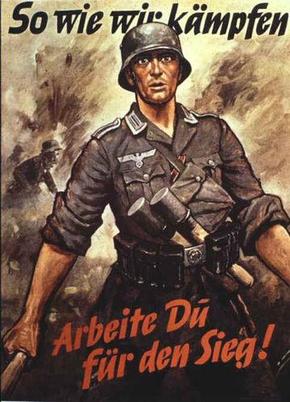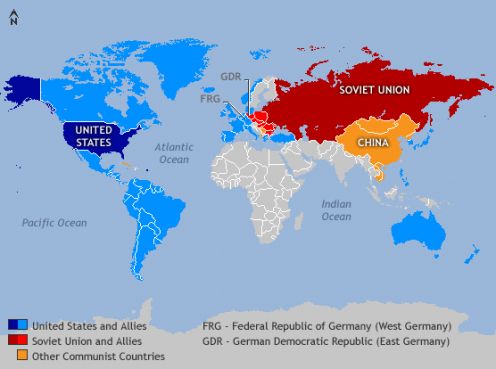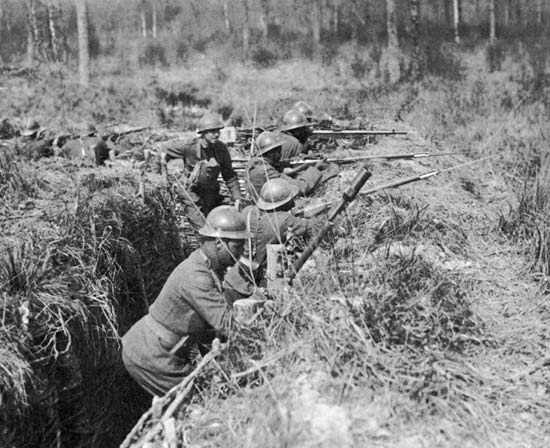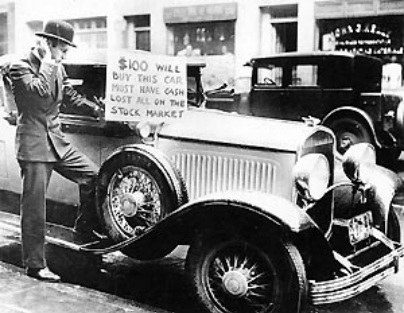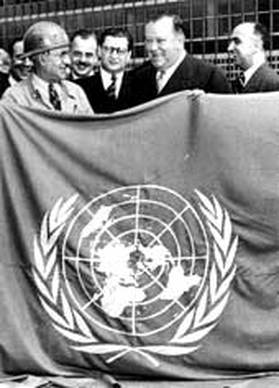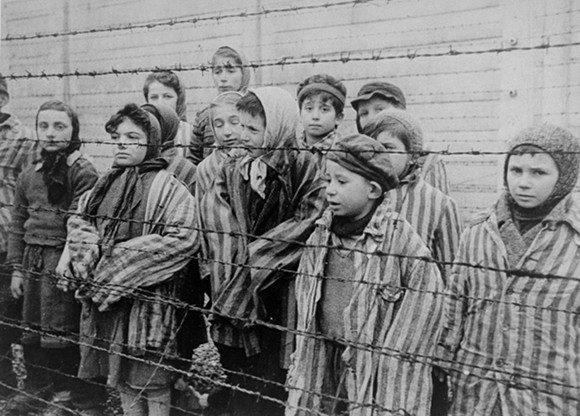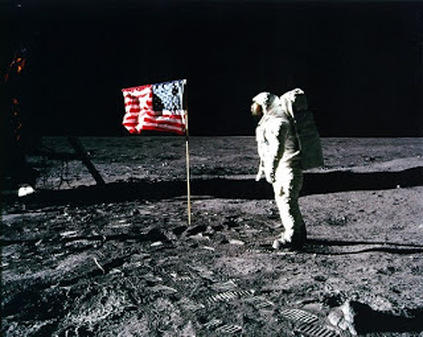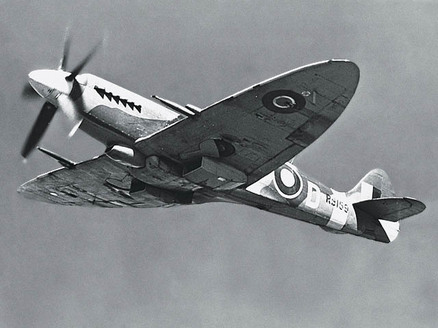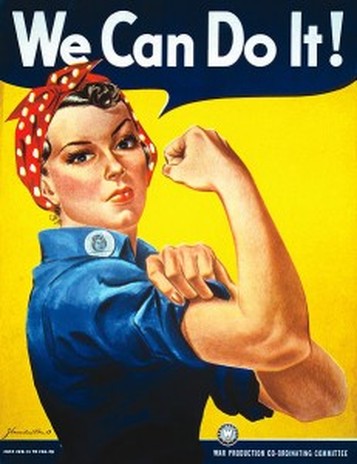AGMSPRITE
AGMS by: Jessalyn Nelson
PRITE by: Elodie Chidiac
Art/ArchitectureArt played an extremely vital role in enlisting popular support from the citizens within the nations that the art was produced. The use of propaganda allowed for nations to encourage their people to aid with the war effort in any way possible and to spread goals of the war through words and pictures over a wide area of lands. In both world wars, women were needed to join the workforce in Europe and the famous cartoon of Rosie the Riveter encouraged women to work in factories while the men were off at war. The Japanese also used propaganda to depict the United States as the enemy as a means of encouraging people to enlist in their army and be victorious in the war efforts of World Wars 1 and 2. Throughout history people have continued to use art a means of conveying an idea to the general public and gaining popular support. The use of propaganda is something that has remained constant, however the forms and distribution of it has changed quite a bit. With advancements in
technology, propaganda is now distributed over the television or the internet in forms that range from mere words to photographs that only show what the producer wants to be seen. The overall impact of art on World War 1 and World War 2 are enlisting popular support, encouraging people to aid in the war effort, and gearing hate towards the enemies of the propaganda producing nations. |
Geography |
The factor of geography was extremely important in World War 1
and World War 2. Europe was extremely divided because of the alliance system and consisted of the two opposing forces in the World Wars and the neutral parties that did not get involved. A leading cause for World War 1 was imperialism due to how countries were constantly attempting to control other nations. With Austria-Hungary attempting to control Serbia and Serbia retaliating with assassination, the first world ear began in Europe. Since most of the fighting took place on German soil, and they caused the most casualties, Germany was forced to take official blame for World War 1. Because of this, territories were taken from Germany and either given to other nations of granted independence. The anger Germany possessed from getting their lands taken from them and being forced to pay reparations was a leading cause in World War 2. Germany expanded all throughout Europe and in an attempt to gain back the lands that were taken from them two decades ago. In contrast to World War 1, World War 2 took place not only in Europe but also in Japan. Japan had invaded Manchuria in 1931 which marked the beginning of World War 2 in Asia. They also advocated for limiting European influence in Southeast Asia with the slogan“Asia for the Asians” and began to invade those colonies that were previously inhabited by European rulers. Previously in history, war did not take place on such a global scale to the point where fighting was in numerous countries and different continents. However, the consistency of countries expanding their borders through war and invading foreign lands is a factor that has remained constant. Overall, geography had an extreme impact in the end by determining if the nation would be capitalist (in the west) or communist (in the east). |
MilitaryThe militaristic tactics of both the world wars varied immensely
not only in how they were fought but what caused them. World War 1 consisted of many stalemates, no land lost or gained, because of the use of trench warfare. Although the method of trench warfare wasn’t very effective with gaining land, the war still produced a significant amount of casualties that totaled to about 37 million. Since Germany caused the majority of the casualties, they were forced to take the official blame which resulted in their military being restricted to 100,000 soldiers. However, in World War 2, the fighting consisted more of battles with lands being lost and gained and also with more technologies such as the atom bomb. In order to end the war, the US dropped two atom bombs in Hiroshima and Nagasaki, Japan as an ultimatum to surrender and end the war. Alliances were also a huge part of both world wars but mainly World War 2. The Soviet-Non Aggression Pact between Germany and the USSR was an agreement that said Germany would not attack the Soviet Union. However, Germany disobeyed this agreement and invaded Poland, declaring war on the USSR. Another pact was the Anti-Comintern Pact that formed an alliance between Germany, Japan, and Italy, which is why there was war in both Europe and the Pacific, causing a totally casualty count of about 63 million. War strategies have continued to change throughout history due to advancements in technology and trial and error with various war tactics. However, alliances are relatively new in the general scope of history. Previously the idea of “every man for himself” was put into effect but within the last few centuries, alliances are becoming more and more common and are contributing to global conflicts. |
Society |
Society’s role in both of the World Wars was considered vital to the existence of the war. Globally, men had the obligation to enlist in the military and fit for their country. As for the women, in the US and Europe, women were encouraged to work in the factories since the men were at war. The Western countries made women feel the duty to contribute to the war effort by doing the men’s job and building weapons that can help the soldiers on the battlefronts. Because of the women’s involvement in the workforce after the First World War, women advocated for more rights which eventually led to them gaining suffrage. Being that women were working in the factories like the men used to, they felt as though they should have equal rights, including the right to vote. Although only Western nations took part in the women’s movement everyone around the world experienced the effects of the Great Depression. At that point, it seemed as though society was classless, even in capitalist nations because the rich were poor and the poor were even poorer. Unemployment was massive and it seemed as though there was no way out. In Germany, the scapegoat for the global economic collapse was the population of the Jewish people. Hitler felt that exterminating the entirety of the Jewish population would solve the world’s problems; in a project he called “The Final Solution”. In what later became known as the Holocaust, over 6 million Jews perished due to the racism of the Nazis during World War 2. Racism has remained constant over the course of history with one race or culture always believing they are superior to others. However, since this period of time, people have gradually become more accepting of differences one another possess and racism has not completely diminished but declined significantly. A major change that occurred during this period of time is women gaining rights as a result of joining the workforce. Women have been constantly oppressed throughout history and deemed as inferior to men but gaining suffrage, a step towards becoming equal to men, is a quite different than any other movement in history.
|
PoliticalPolitically, both World Wars created associations for nations to join to preserve peace and prosperity after the damages done by the battles. Although all these associations attempted to conserve serenity, only one still stands till today; the United Nations. The political outcomes of World War I were directly related to the economical issues. The Treaty of Versailles blamed Germany for all the damages and all the European nations argued for Germany to pay off the debt with money they did not possess. Countries became limited in how many troops they could train and the number of ships and wartime weapons were restricted. In addition, The League of Nations was created in order to preserve peace and establish humanitarian goals. Women gained the right to vote in many parts of the world by the first quarter of the 20th century. By 1930, that right had been gained by women in much of Latin America, India, China, and most of Europe. After World War II, most of the newly independent African countries included women’s suffrage in their constitutions, and it is only in the most fundamentalist countries of the Middle East that women still did not have the right to vote.
|
Religion |
In this period of time, as in many others, religious differences led to disharmony among the people of Europe and were one of the causes behind the murder of over six million Jews. In 1933 the Nazi party came to power, and soon after it took measures to eliminate Jews. The Nazis began spreading propaganda about the Jews. They were the ethnic group that was used as a scapegoat for Germany's loss of World War I which was one of the causes of strong anti-Antisemitism among Germans. First an effort was made by the Nazi Party to take away any economic prosperity. Later in 1938 all of Germany's synagogues were set on fire. Jewish businesses were destroyed and thousands of Jews were arrested. In 1941 further measures were taken by Germany. German armies invaded the USSR with orders to kill Soviet Jews who first were deported to ghettos for manual and industrial labor. By 1945 millions of Jews and other groups chosen by the Nazi party had been persecuted, tortured and killed. This entire event, known as the Holocaust, caused a lot of controversy in world politics. |
IntellectDuring both World Wars, human intelligence was able to greatly increase. From the neat maneuver of the trenches to the nuclear weapons in the Cold War, it is clear that society has increased its IQ. After both World Wars, competition and conflict rose between the European nations on which country was to blame. After World War II, superpowers such as the United States and the Soviet Union began to emerge, competing while testing the limits of the human mind in their race into space. The competition and high hazards that existed in the space race provided an extremely large amount of motivation for leading scientists around the world to find out ways to get into space. This is a reliable example to show how motivation and competition forced thinkers to imagine technological strategies in order to make their trip to the moon come true. Looking at today’s society, human intelligence has increased human cooperation. With the invention of the internet, an extremely successful way of communication came along which allowed individuals to share ideas at a faster pace which increased efficiency.
|
Technology |
New technology made war more horrible and more complex than ever before. The United States and other countries felt the effects of the war for years afterwards. The popular image of World War I is soldiers in muddy trenches and dugouts, living miserably until the next attack. This is basically correct. Technological developments in engineering, metallurgy, chemistry, and optics had produced weapons deadlier than anything known before. The power of defensive weapons made winning the war on the western front all but impossible for either side. Airplanes, products of the new technology, were primarily made of canvas, wood, and wire. At first they were used only to observe enemy troops. As their effectiveness became apparent, both sides shot planes down with artillery from the ground and with rifles, pistols, and machine guns from other planes. At first, gas was just released from large cylinders and carried by the wind into nearby enemy lines. Later, phosgene and other gases were loaded into artillery shells and shot into enemy trenches. The Germans used this weapon the most, realizing that enemy soldiers wearing gas masks did not fight as well. Modern war technology had changed the course of civilization. Millions had been killed, gassed, maimed, or starved. Famine and disease continued to rage through central Europe, taking countless lives. Because of rapid technological advances in every area, the nature of warfare had changed forever, affecting soldiers, airmen, sailors, and civilians alike.
|
EconomyWhen the First World War erupted, the alliances were fighting over territory. Europe was destroyed and the land was torn up. While Europe was trying to clean up the mess, the cost for the reparations was more than expected. Many men went to fight while women did their work raising the children and taking care of the home. This had a long-term effect upon women's liberation, although any gains seemed to evaporate straight after the war, when the men came back and many women went back to the kitchen. However, many of the leaders of women's liberation in the 1860's had begun their working careers during the war. With the spark of both World Wars, there was a huge growth in munitions/ aircraft industries while other industries were put on hold. While soldiers were recruited, the emphasis on food production grew enormously. Shortages of men workers in industries increased which pushed for the women to get hired into jobs they were never allowed to do before. A shift to profitable industries in chemicals, textiles and electronics, has provided further economic opportunities for women. By the mid-1980s, education has allowed women to fully participate in the work place. But women in agricultural economies continued to have their labor under-enumerated and throughout the world, women’s pay yet to fully equal that of her male counterparts, nor are women compensated for the time they spend on a second shift as primary caregivers of young children.
|
Works Cited:
"Cracking the AP World History Exam, 2013 Edition." Barnes & Noble. N.p., n.d. Web. 05 May 2013
"Economic Effects of the War." Economic Effects of World War II. N.p., n.d. Web. 05 May 2013.
"First World War Casualties." First World War Casualties. N.p., 2000-2013. Web. 05 May 2013. <http://www.historylearningsite.co.uk/FWWcasualties.htm>.
"I - CAUSES of WWI." Apworldhistory-rochester-k12-mi-us. N.p., n.d. Web. 05 May 2013.
Mr. Marc Compton
"WWI: Technology and the Weapons of War." NCpedia Home Page. N.p., n.d. Web. 05 May 2013.
"World War 2 Casualty Statistics." World War 2 Statistics. N.p., 2006-2013. Web. 05 May 2013. <http://www.secondworldwarhistory.com/world-war-2-
statistics.asp>.
"Economic Effects of the War." Economic Effects of World War II. N.p., n.d. Web. 05 May 2013.
"First World War Casualties." First World War Casualties. N.p., 2000-2013. Web. 05 May 2013. <http://www.historylearningsite.co.uk/FWWcasualties.htm>.
"I - CAUSES of WWI." Apworldhistory-rochester-k12-mi-us. N.p., n.d. Web. 05 May 2013.
Mr. Marc Compton
"WWI: Technology and the Weapons of War." NCpedia Home Page. N.p., n.d. Web. 05 May 2013.
"World War 2 Casualty Statistics." World War 2 Statistics. N.p., 2006-2013. Web. 05 May 2013. <http://www.secondworldwarhistory.com/world-war-2-
statistics.asp>.
